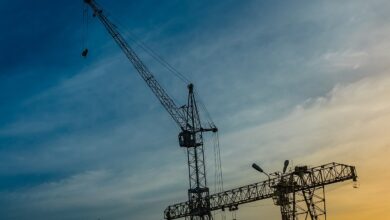Innovation and industry 4.0

The Fourth Industrial Revolution, also known as Industry 4.0, has been changing the way business models are designed and organisations works.
Characterised by increased automation and interconnectivity levels, the technological advances from I4.0 have connected the cyber and physical worlds, collecting and exchanging data in real time between processes, products, services, and people. This large amount of data is then processed and transformed into actual information to support more assertive decision-making, or even used to control software and move mechanical devices.
This enhanced ability of sensing, communicating, processing, and actuating based on real-time data utilisation is claimed to lead organisations to superior performance levels.
In this article we will see how innovation will foster industry 4.0. In recent years adopted innovation in the manufacturing are in favour of the development of industry 4.0 industrial revolution.
The integration of the technology innovation in industrial systems which is the main attribute of industry 4.0 industrial revolution has been a way to increase productivity economic growth and wealth.
This approach has seen fruitful results especially in Germany especially an increase in productivity and efficiency in German production systems.
In 2015, Klaus Schwab – Founder and Executive Chairman of the World Economic Forum – wrote: “Now a Fourth Industrial Revolution is building on the Third, the digital revolution that has been occurring since the middle of the last century. It is characterised by a fusion of technologies that is blurring the lines between the physical, digital, and biological spheres. There are three reasons why today’s transformations represent not merely a prolongation of Industry 3.0 but rather the arrival of a Fourth and distinct one: velocity, scope, and systems impact. The speed of current breakthroughs has no historical precedent. When compared with previous industrial revolutions, the Fourth is evolving at an exponential rather than a linear pace. Moreover, it is disrupting almost every industry in every country. And the breadth and depth of these changes herald the transformation of entire systems of production, management, and governance ”
Characteristics of industry 4.0
Industry 4.0 gained a lot of attention from both the scientific community and practitioners, being considered a topical research avenue of great value.
Industry 4.0 is characterised by the application of information and communications technologies (ICTs) that reduces the boundaries between actors involved in the supply chain. It fosters massive digitisation, big data analytics, advanced robotics, adaptive automation, additive and precision manufacturing, modelling and simulation, artificial intelligence (AI), and nano-engineering of mate-rials.
Other characteristics of industry 4.0:
– Short production runs of mass-customised goods
– The global fragmentation of value chains
– The networking of productive capacities
– Reducing boundaries between producers, sellers and consumers and also between industry and the services sector.
Industry 4.0 strongly influences technological innovations and offers important opportunities.
What are the previous industrial revolutions
Industry 1.0: started in the eighteenth century, Industry 1.0 is first to use steam power for industrial purposes and the mechanisation of production.
Industry 2.0: appeared in the nineteenth century, the revolution initiated mass production systems enabled through the use of electrically powered systems
Industry 3.0: Industry 3.0 initiated in the 1970s and witness an important developments in information technology and partial automation using memory-programmable controls and computers.
What after industry 4.0
Industry 5.0, which will use smart digital information and full automation through collaborative robots.
Industry 4.0 innovations
Internet-of-Things: it is a type of network used to connect objects and things to the network, providing reliable transmission and processing of data and information.
Big data: Is the processing of large data set using analytical technology, which includes unstructured data and without compatible formats.
Cloud computing: It enables access to software and data storage in the cloud representation of the internet.
Wireless sensors: They represent networks of spatially dispersed and dedicated sensors that control and record the physical conditions of the environment and forward the collected data to a central location.
3D printing: It refers to processes in which material is deposited, joined or solidified under computer control to create a three- dimensional object.
Augmented reality/ simulation: It relies on the concept of virtual reality with real-world scenario data
Collaborative robots: It is a robot intended for direct human robot interaction within a shared space.
Machine/Deep learning: It refers to computer algorithms that can improve automatically through experience and using data.
Remote control/ monitoring: It is designed to control complex equipment/facilities with some degree of automation.
